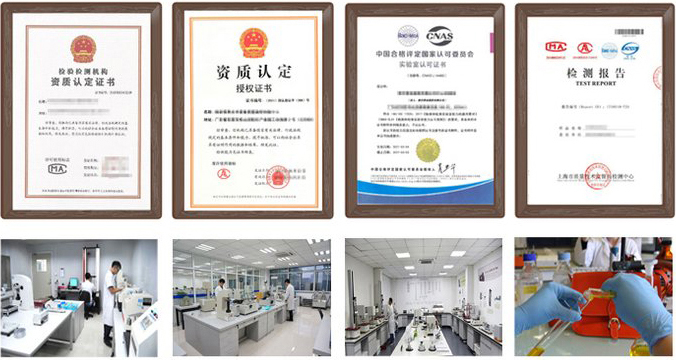Citronellal detectionHow to apply for a report? What items need to be tested? We will conduct testing and evaluation in strict accordance with the standards. We can also provide personalized testing plans and reports according to your needs.
The detection methods of citronellal mainly include the following:
1. Gas chromatography (GC)
Gas chromatography is a commonly used citronellal detection method. Its principle is to use the different distribution coefficients of each component in the sample between the gas phase and the stationary liquid. When the sample is brought into the chromatographic column by the carrier gas, the components are separated in the chromatographic column and then enter the detector in turn for detection.
Specific steps include:
Sample preparation: The citronellal sample to be tested is properly pretreated, such as dissolving, diluting, etc., to ensure that it is suitable for gas chromatography analysis.
Chromatographic condition setting: Select the appropriate chromatographic column, carrier gas, flow rate, column temperature, and other parameters. Commonly used chromatographic columns include capillary columns, etc., and carrier gases are selected from nitrogen, helium, etc. according to detection requirements. The flow rate and column temperature settings also need to be adjusted according to specific circumstances.
Injection and detection: The pretreated sample is injected into the gas chromatograph for separation and detection. By recording the chromatogram and peak area or peak height, the content of citronellal in the sample can be calculated.
2. High-Performance Liquid Chromatography (HPLC)
High-Performance Liquid Chromatography is also one of the commonly used methods for citronellal detection. This method has the advantages of high sensitivity, high resolution, and high reproducibility, and can accurately and quickly separate and detect citronellal and its related compounds.
Specific steps include:
Sample preparation: The citronellal sample to be tested also needs to be properly pretreated.
Chromatographic condition setting: Select the appropriate chromatographic column, mobile phase, flow rate, column temperature, and other parameters. Commonly used chromatographic columns include C18, C8, etc., and the mobile phase selects appropriate solvents such as methanol, acetonitrile, etc. according to the properties of citronellal. The flow rate and column temperature settings also need to be adjusted according to specific circumstances.
Injection and detection: Inject the pretreated sample into the high-performance liquid chromatograph for separation and detection. By recording the chromatogram and peak area or peak height, the content of citronellal in the sample can also be calculated.
3. Mass spectrometry (MS)
Mass spectrometry is a highly sensitive analytical method that can be used for qualitative and quantitative analysis of citronellal. This method uses the differences in the behavior of each component in the sample in an electric field or magnetic field for separation and detection.
The specific steps include:
Sample preparation: The citronellal sample to be tested is properly pretreated, such as dissolving, diluting, etc.
Mass spectrometry condition setting: Select the appropriate mass spectrometer, ionization mode, scanning range, and other parameters.
Injection and detection: The pretreated sample is injected into the mass spectrometer for ionization and separation, and then the mass spectrum and the relative abundance of each component are recorded. By comparing with the mass spectrum of the standard, the presence of citronellal in the sample can be determined and quantitatively analyzed.
IV. Other methods
In addition to the three commonly used detection methods mentioned above, there are some other methods that can be used for the detection of citronellal, such as infrared spectroscopy, electrochemical detection, etc. These methods have their own characteristics, but they may need to be selected and optimized according to the specific properties and detection requirements of citronellal.
V. Precautions
Sample processing: Ensure that no contamination and errors are introduced during sample processing to ensure the accuracy of the test results.
Instrument calibration: Calibrate and maintain the detection instrument regularly to ensure its stable and reliable performance.
Method validation: Before the formal test, the test method needs to be validated and optimized to ensure that it is suitable for the sample to be tested and the test requirements.
Data recording and processing: Record the data and results of the test process in detail, and perform appropriate processing and analysis to draw accurate conclusions.
In summary, there are many methods for detecting citronellal. The specific method to be selected depends on factors such as the nature of the sample to be tested, the test requirements, and the laboratory conditions. In practical applications, the method should be selected and optimized according to the specific situation.
Test report function
1、Project bidding: issue authoritative third-party CMA/CNAS qualification report;
2、E-commerce platform entry: quality inspection reports recognized by major e-commerce platforms;
3、Used as sales report: issuing a test report with legal effect to make consumers feel more at ease;
4、Papers and scientific research: providing professional and personalized testing needs;
5、Judicial services: providing scientific, fair and accurate testing data;
6、Industrial problem diagnosis: verifying the troubleshooting and correction of problems in industrial production;


 National free customer service telephone 400-101-7153
National free customer service telephone 400-101-7153 

